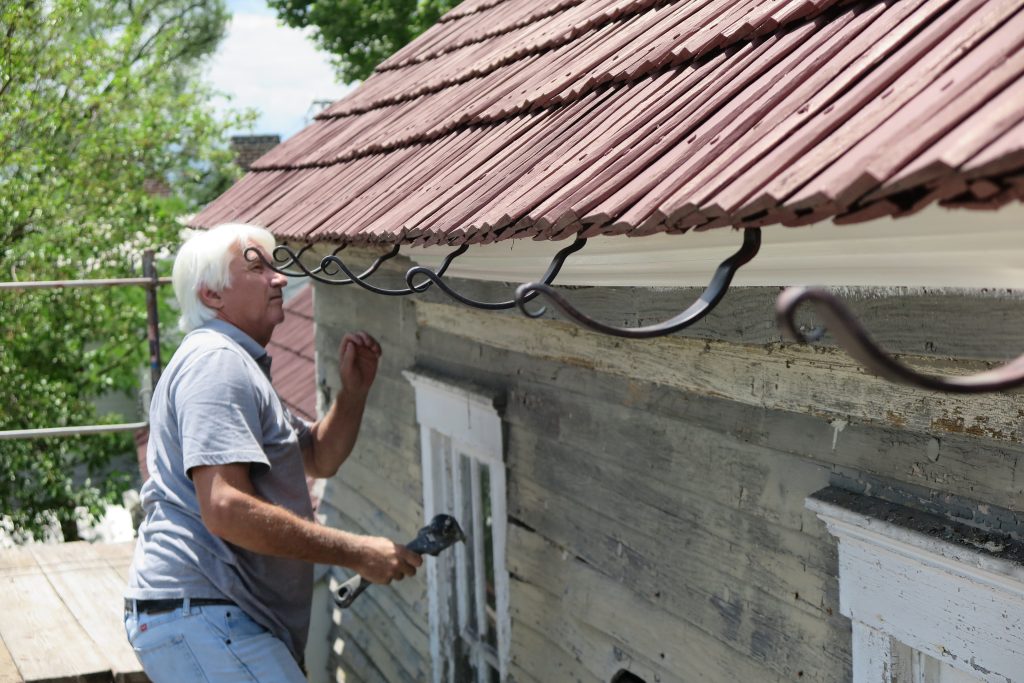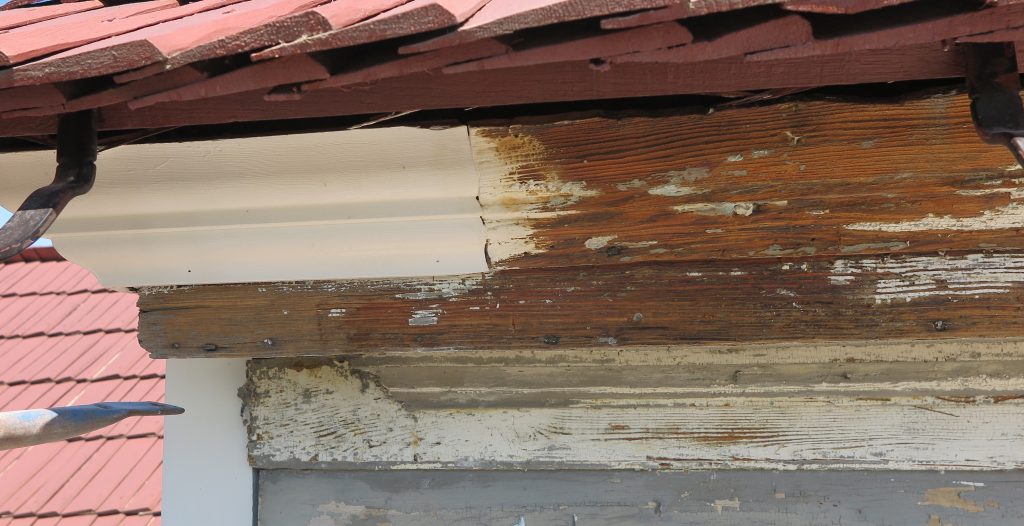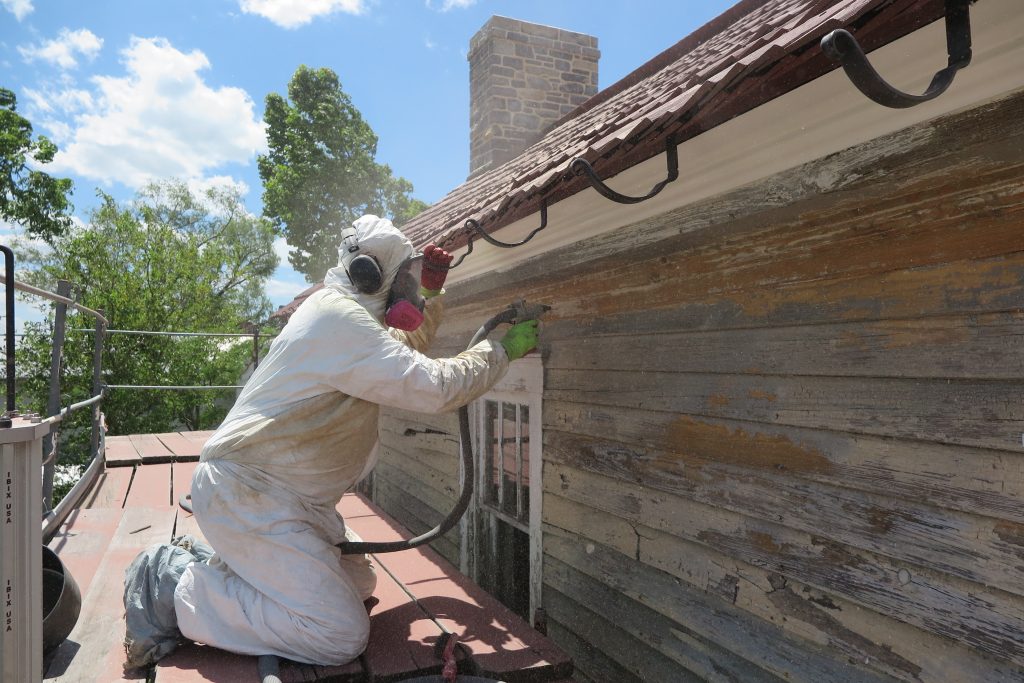On May 28th Mr. James Magill, proprietor of Eco Valley Blasting of Woodstock, Virginia, began the surface preparation treatment of the surviving sections of crown molding and soffits on the Stone House. (See photo below.)

To understand the process we are undertaking, we first need to explain the ethics of historic preservation as they relate to our restoration of the Stone House. One guiding principle of an historic restoration project is to preserve as much of the structure’s original fabric as possible. This is especially the case with the parts of the structure that relate to the time period that is the focus of the restoration plan. During our forensic investigation of the exterior of the structure, we discovered that the crown molding, soffit, and the top weatherboard under it on the log side were original to the time when that side of the house was raised to its current height in 1804. Consequently, these features needed to be preserved at all cost. Unfortunately, some of the crown molding had already suffered rot damage many years ago, and those sections had to be replaced with new molding that was an exact copy of the original molding. The original sections of molding, soffit, and top weatherboard that remained had suffered from exposure to the elements and had layers of modern paint over the historical base layers of whitewash and/or white paint. (See image below.)

To ensure the survival of these original sections of crown molding and weatherboards, we will be painting them with a high-quality, linseed oil-based paint. In order to make certain that the new coats of paint will properly penetrate and adhere to the remaining sections of original molding, we need to remove as much of the old paint as possible. Anyone who has any experience with painting knows that it does not matter how good your new paint is. Proper surface preparation is the key to making sure the new coats of paint remain affixed to the surfaces they are supposed to protect. Earlier, our main preservation contractor, Mr. David Logan, proprietor of Vintage, Inc., had conducted experiments to determine the best approach to removing the old paint and preparing the surfaces. He concluded that the most effective way to remove the paint without causing damage to the historical molding was a combination of careful scraping, chemical stripping, and soft-abrasive blasting. After receiving approval from us, he then hired Mr. James Magill to conduct the work.

On June 7th Mr. Magill began to utilize garnet-dust blasting to remove the paint/whitewash that his previous efforts with scraping and using a chemical stripper had failed to eliminate. Wearing protective gear, Mr. Magill carefully sprayed the garnet dust at high velocity over the nooks and crannies of the soffit and crown molding. (See photo above.) There are advantages of using garnet dust. It is safer because it is nontoxic and less abrasive than silica sand. It also produces less dust and can do more with less volume, so it is more cost effective.
Our main reason for wanting to prepare and paint the crown and soffit molding at this time is because our next step in the project will be the installation of the gutters. After the gutters are installed, access to the crown and soffit molding will be limited and more difficult. In the meantime our focus is on the preservation of this original woodwork under our new roof.
